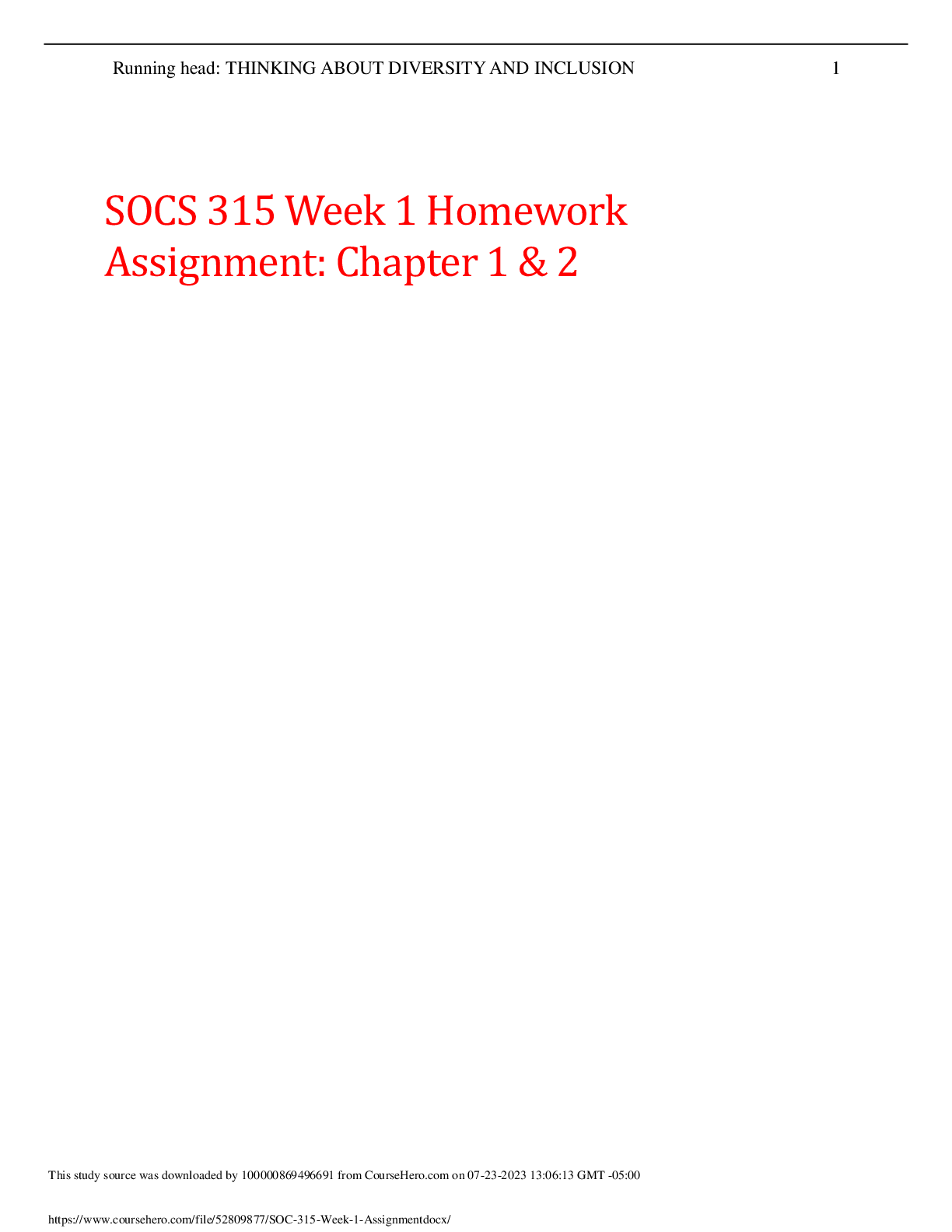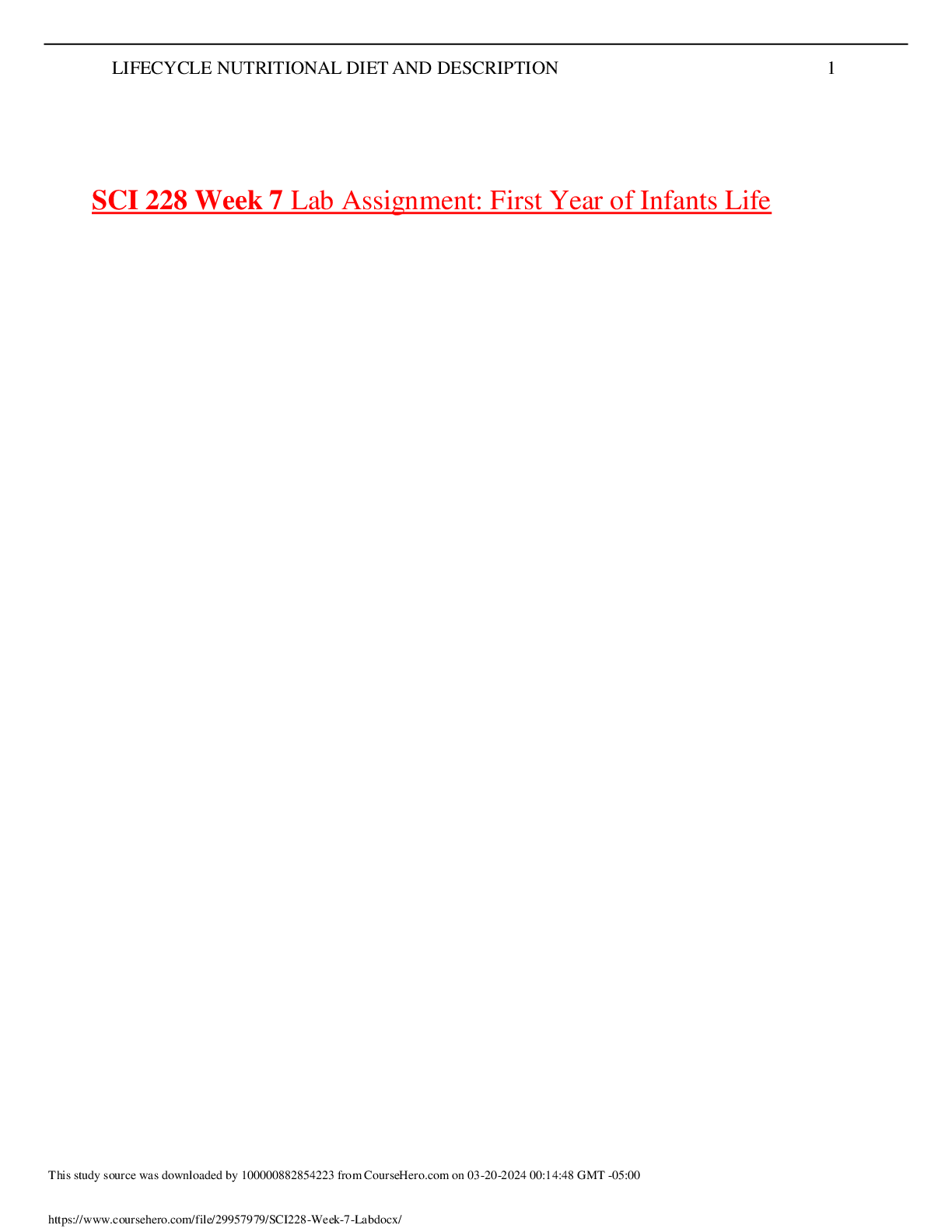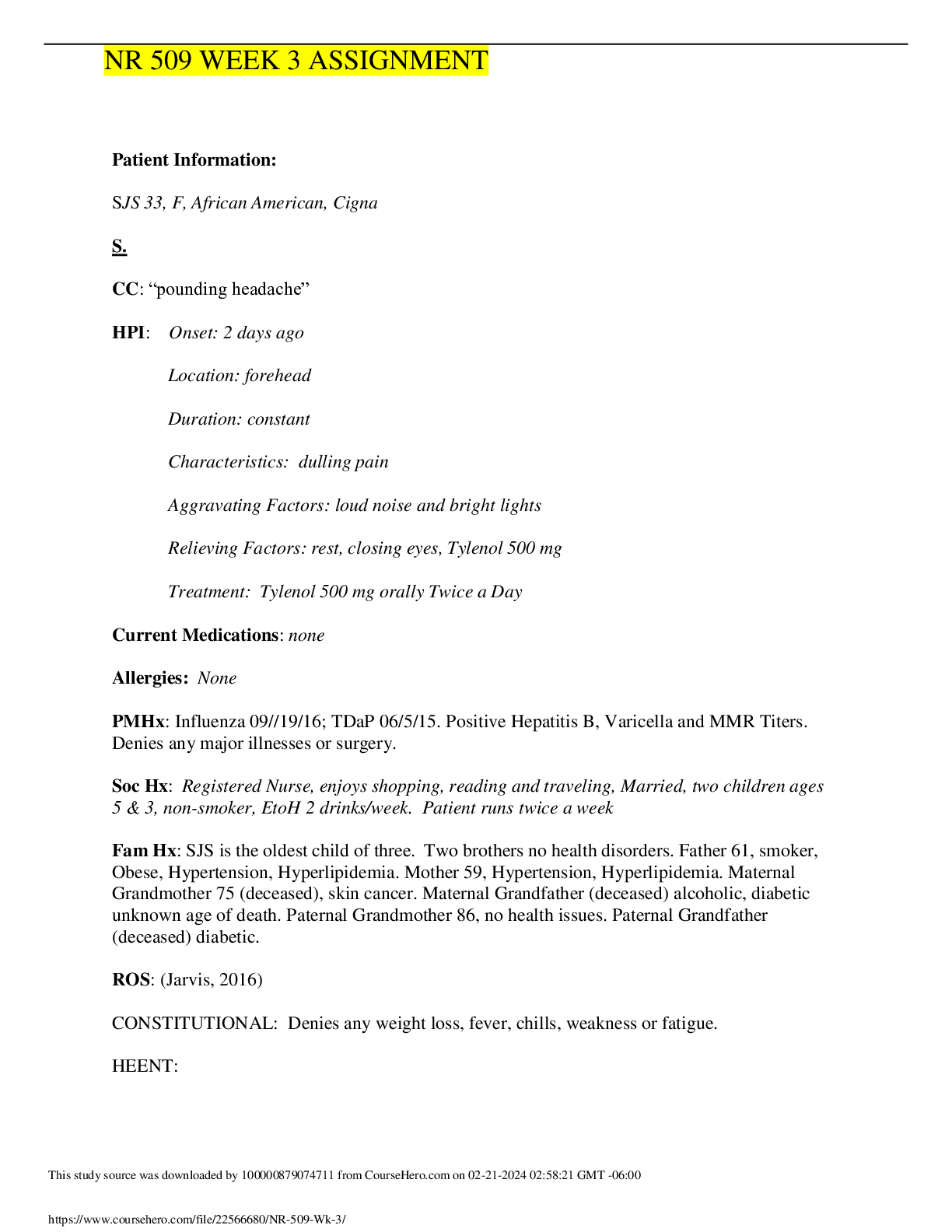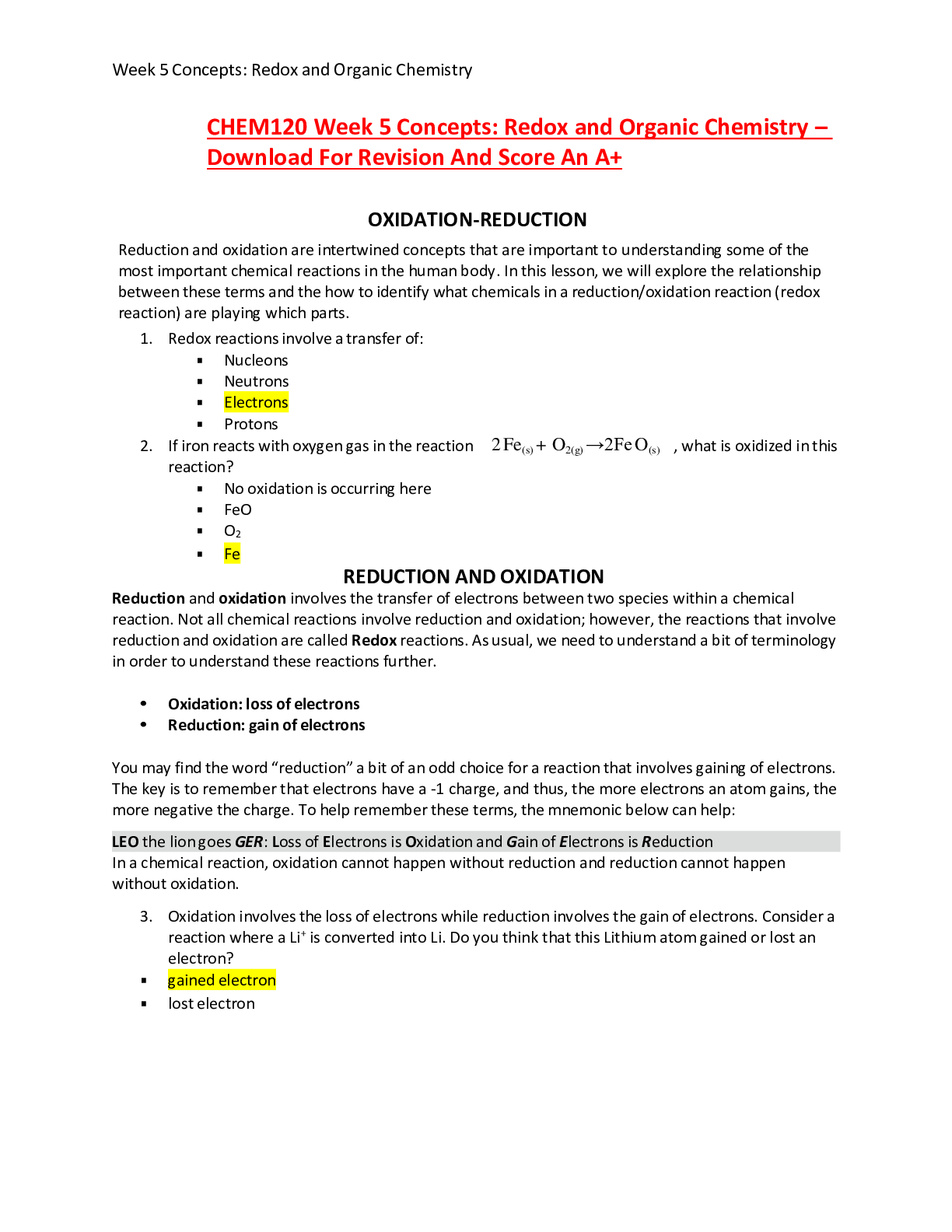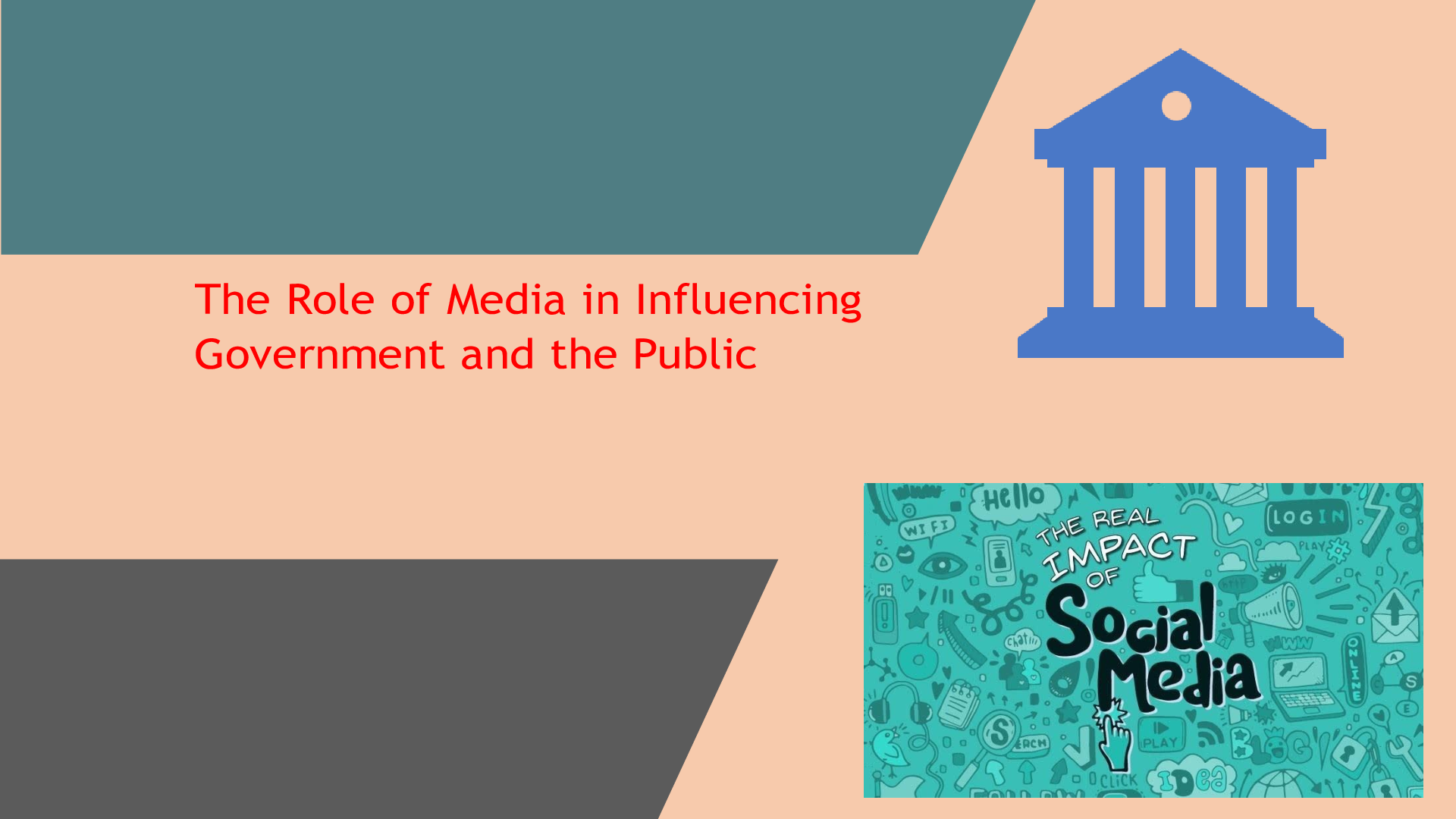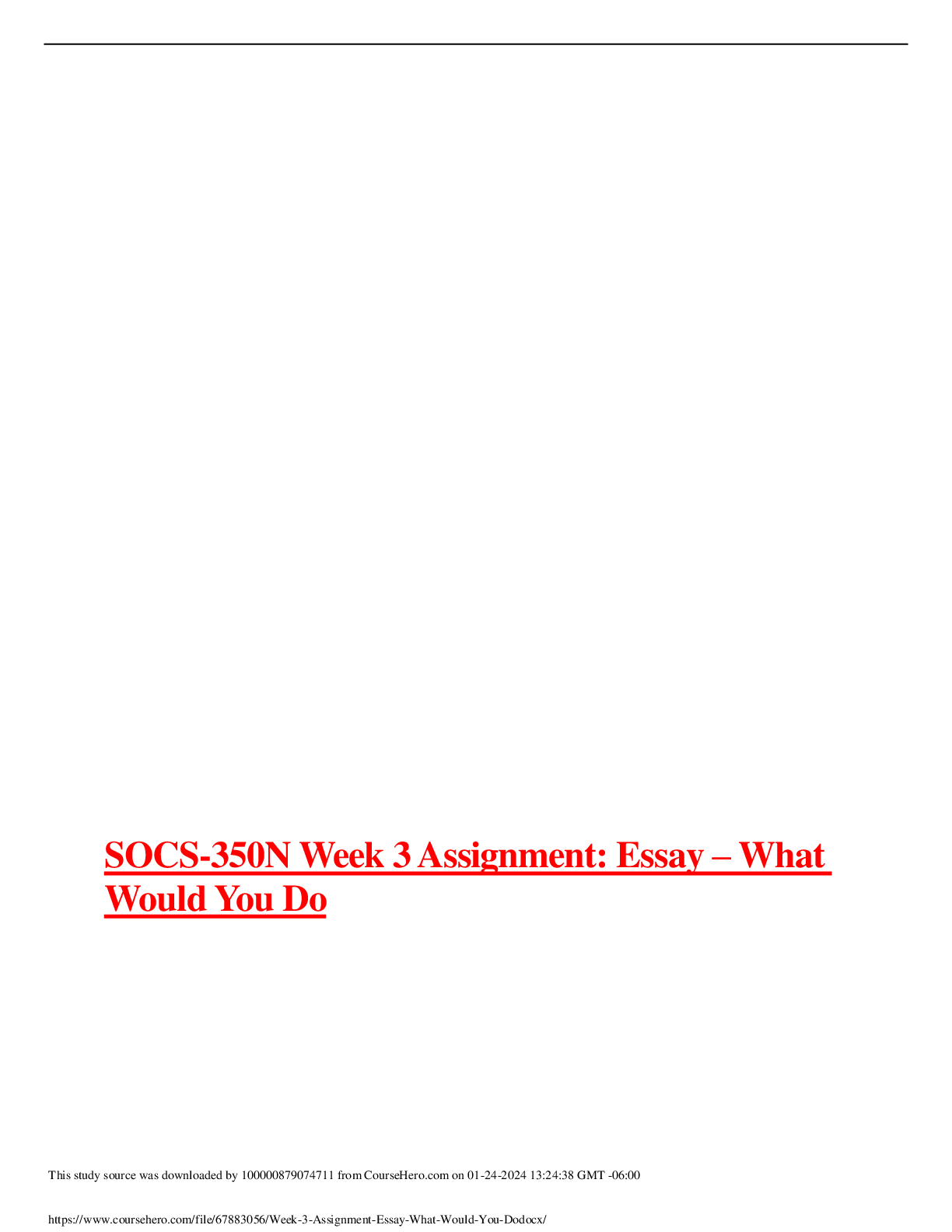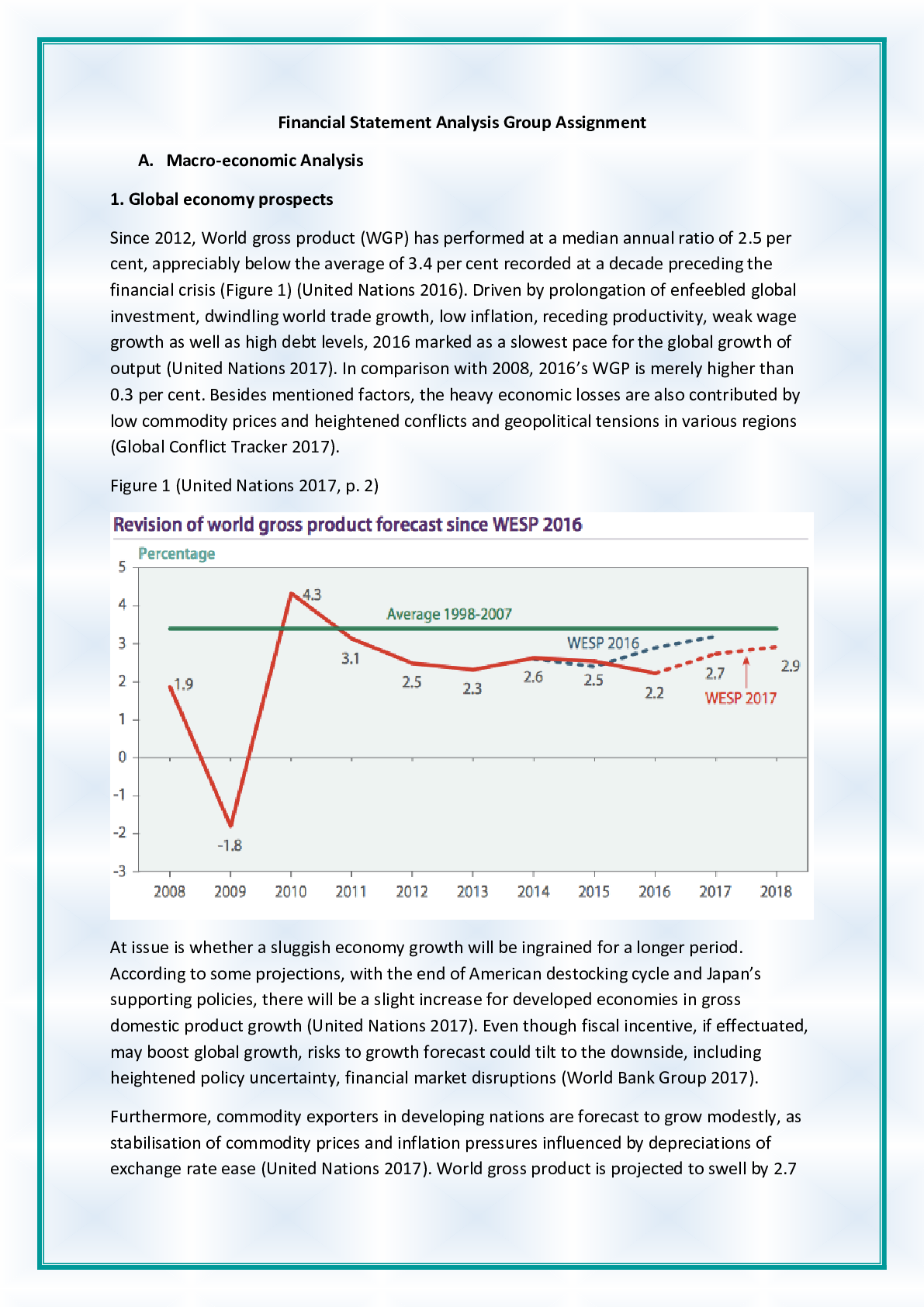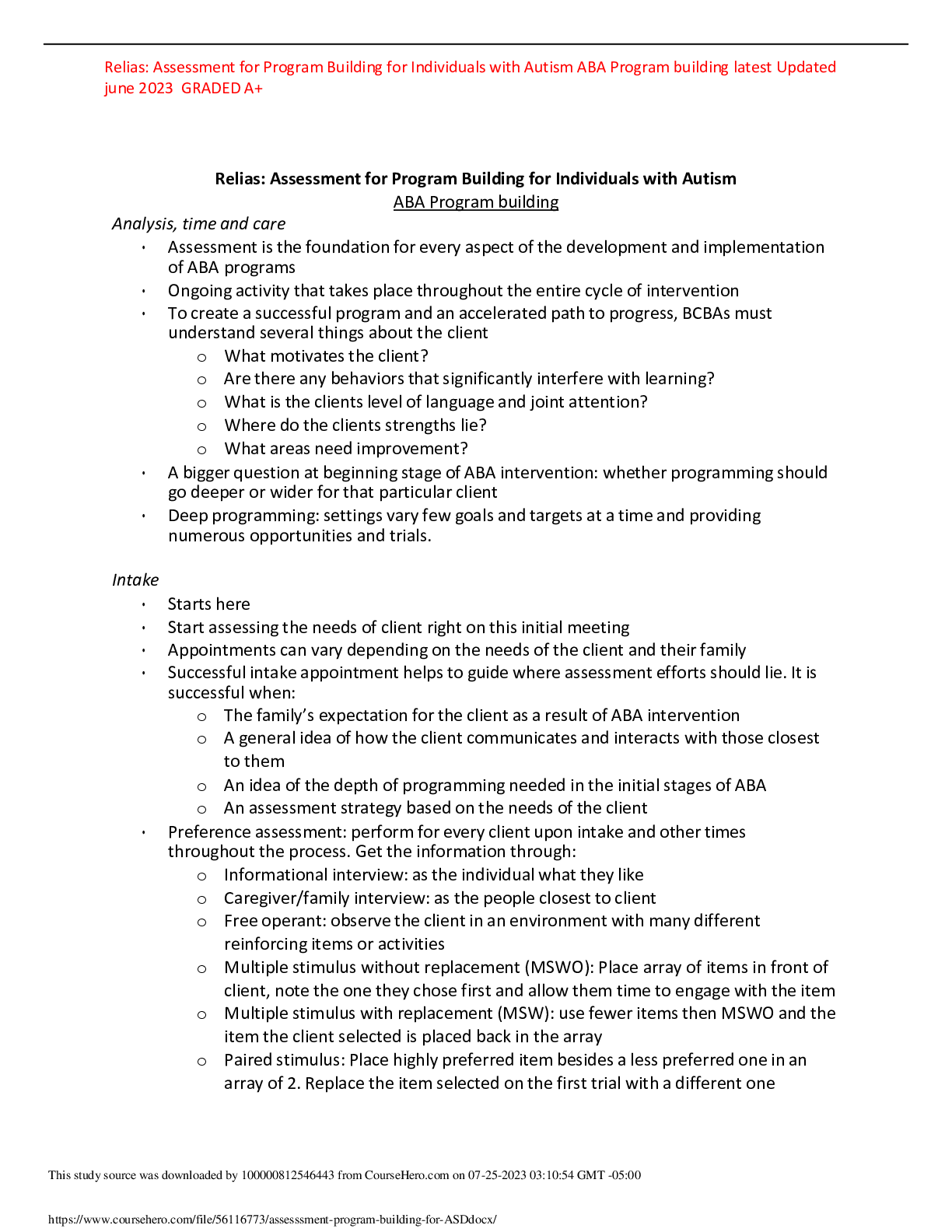Religious Studies > ASSIGNMENT > RELI 448N Week 3 Assignment: Comparison-Contrast Essay - Download Assignment To Get A Pass (All)
RELI 448N Week 3 Assignment: Comparison-Contrast Essay - Download Assignment To Get A Pass
Document Content and Description Below
RELI 448N Week 3 Assignment: Comparison-Contrast Essay Hinduism and Buddhism Many people believe that Hinduism and Buddhism... are from a similar religion with only different names. Nevertheless, regardless of the broad acknowledgment of this hypothesis, Hinduism and Buddhism are two diametrical beliefs which have diverse rituals and possess various religious aspects. Regardless, there is a contentious proposition indicating that Buddhism is a rip off of Hinduism because the two religions are believed to have Indian roots. In accordance with this view, even though the two religions may seem different, in some aspects, they have similar practices and also belief systems. Therefore, this research pursues Hinduism and Buddhism through comparison and contrasting the karma and rebirth dogmas in the two religious beliefs (Molloy, 2013). Comparing Karma in Hinduism and Buddhism Karma is an important aspect which deeply engraved in the Hinduism and Buddhism religion. Like in many other doctrines like Taoism, the aspect of Karma comprises of cosmic law and universal code. The concept of Karma describes the belief that the actions of an individual may have a considerable impact on both negative and positive in the current life or the next life (Molloy, 2013). On the other hand, Karma is deemed as a connotation which thinly implies that previous actions may fully impact the coming events. Hinduism and Buddhism mainly have a mutual belief when it comes to the principle of Karma and how it works. In the two religions, actions and choices lead to consequences, and individuals are mainly bound by the desires of a person which mould their future events. Hinduism and Buddhism possess a big convention that Karma is accountable for the existing afflictions and plague in addition to rebirth. Both religions indicate that desires come from the actions of the senses when they constantly have contact with sense objects, therefore, causing aversion and attraction to pair opposites, for instance, cold or heat or pain and pleasure. Henceforth, they sensitize the significance of undertaking renunciation and detachment to uphold similarity, equality, and indifference. Therefore, through comprehending, what leads to suffering with the aid of dharma, a person can conquer the issue of Karma and attain liberation (Larson, 2014). Both religions maintain the importance of Karma to attaining nirvana (liberation). When beings gain Karma, they cannot escape suffering and moreover birth and death. Meritorious Karma can be an obstacle since it leads to duality, agony, captivity, and evanescence in cases of meritorious Karma, a person can rise to high worlds although it does not alleviate from more adjustments, agony or instability. To attain nirvana, the aspects of the mind and body of a being are dissolved and in addition to it the creation of previous and current Karma, principal nature and the fruit of Karma. Both religions believe that there is a way to solve Karma partial or full through the efforts of a person (Larson, 2014). Through observing dharma, upholding values like peace, honesty, compassion, transparency, and friendliness, getting guidance from heavenly beings and being a righteous person like a proper living, selfless activities, undertaking in charitable activities to help the poor and the needy, a person can decrease or balance the results of errant actions. Lastly, through healing and transference, some aspects of Buddhism and Hinduism indicate that good Karma can be passed from one person to another for the purposes of healing or to solve agony. It is one of the main aspects of sacrifice, selfless service, and charity, which helps the receiver and provider (Eliot, 2018). There are some differences regarding Karma in the two religions. For instance, the Hinduism rituals are identical to good Karma. The rituals, chanting of religious names, praying, pilgrimages, shrines among others are aspects of good Karma which aid people to get good merit and solve results of errant behaviour and negligence. The Buddha indicated that righteous actions were better than a benevolent aspect of nature. He indicated that Karma could be solved through undertaking dharma, and practicing living ethically, having the right thinking and perceptions. Nevertheless, some schools of Buddhism maintain that praying, chants, pilgrimaging, meditating and contemplating on religious teachings, reciting scriptures and praying to Buddha’s and Bodhisattvas and heavenly gods could lead to accumulating good Karma and resolving the previous agony(Eliot,2018). Another different area is self and not-self, whereby, according to Hinduism, even though beings are part of Karma, the soul is free eternally and not influenced by Karma. Although the soul is part of the karma birth cycles, and Karma may increase its presence in the current world, the soul is always impermeable to the occurrences in the earthly world. It always remains pure, splendid, heavenly, blissful, infinite, omnipresent, and omniscient. However, Buddhism does not recognize the presence of everlasting souls. Therefore, in this case, there is no aspect of the being which can be deemed everlasting pure or impermeable to Karma. The results of Karma saturate in addition to encompass the overall being who is their cradle on all sides and ensure it is bound to the birth cycles and death till the being is totally critiqued through a dissolution of all formation and the groups which are form its collection(Eliot,2018). Comparing Rebirth in Hinduism and Buddhism In Hinduism and Buddhism, there is a particular reference of souls and the reincarnation cycle. When it comes to Hinduism, the discrete personal soul which gathers Karma is known as jiva. However, in Buddhism, there is a concept of Anatta of the ideology that there exists no permanence in terms of soul or self. The two religions have one concept called samsara, which in the two religions is just a reincarnation cycle or traveling through many reincarnations (Appleton, 2014). The Hindus believe in the aspect of reincarnating (Samsara) whereby following death, an individual will stay in heaven or hell surroundings with regards to the collected Karma. The individuals will be reborn after that into a newer modern, and it can be in human form, animal, or even a divine being. This cycle is continued until when a person attains moksha. Buddhists also trust in the aspect of samsara which is This study source was downloaded by 100000867552271 from CourseHero.com on 06-11-2023 15:56:37 GMT -05:00 hurting condition whereby individuals are caged in possibly non-ending rounds of rebirth, lives on earth, deaths, being in one of six existing realms. The realms comprise of three good realms (human, demi-gods and heavenly being). The continual cycles only come to a stop when a person gets nirvana in one of their lives on earth (Appleton, 2014). The aspect of reincarnation is similar to transferring souls, whereas, in rebirth, this does not occur. In Hinduism, reincarnation is based on perpetuity, everlastingness, and non-destruction of the soul while in Buddhism, there is no such aspect of the soul. In Hinduism religion, reincarnation occurs when every individual has to resolve their account for the bad and good deeds in the previous life whereas in Buddhism rebirth does not take into account the previous deeds of the past life. In the Hinduism teaching, if an individual surrenders his or herself unconditionally to the deity, he or she is able to be released from the reincarnation although in Buddhism there is no such belief that devotion to God can lead to a person gaining Nirvana (Coomaraswamy, 2011). In conclusion, regardless of their similarities and differences, Hinduism and Buddhism are applied all over around the globe today. They are not solely religions but also ways of life of many believers in the universe. They are both similar, although also diverse in more than one way. In the aspects of Karma and rebirth, each of the religion possesses incredible beliefs and practices, and some of those are similar between the two religious beliefs. In summary, there is one aspect which stands out: the believers in the religions are devoted to living their lives by the religious beliefs and gain their ultimate goals. References Appleton, N. (2014). Narrating karma and rebirth: Buddhist and Jain multi-life stories. Cambridge University Press. Coomaraswamy, A. K. (2011). Hinduism and Buddhism. Golden Elixir Press. Eliot, G. (2018). Hinduism and Buddhism (Vol. 1). BoD–Books on Demand. Larson, P. (2014). Karma. Encyclopedia of Psychology and Religion, 990-990. Molloy, M. (2013). Experiencing the world's religions (6th Ed.). New York City, NY: McGraw-Hill [Show More]
Last updated: 10 months ago
Preview 1 out of 6 pages

Reviews( 0 )
Document information
Connected school, study & course
About the document
Uploaded On
Jun 12, 2023
Number of pages
6
Written in
Additional information
This document has been written for:
Uploaded
Jun 12, 2023
Downloads
0
Views
39






